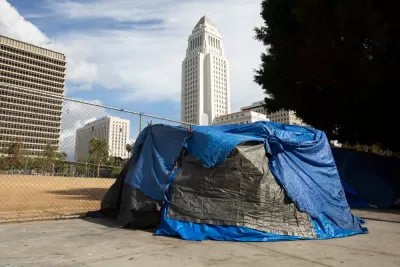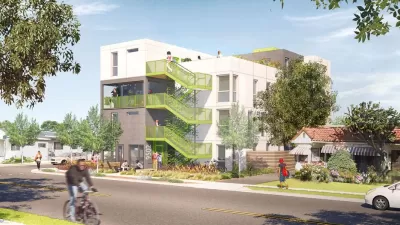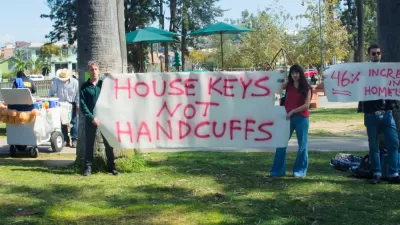Local governments often come to different conclusions about how to address homelessness within their respective borders, but varying approaches only exacerbate the problem.

In mid-December, Karen Bass was sworn in as mayor in Los Angeles, the first woman mayor in city history. Leaders across the region were quick to express support when Bass declared a state of emergency related to homelessness and launched the Inside Safe program, with the intention of moving people off the street and into temporary housing in city-leased properties. These actions, taken during the new mayor’s first week in office, signaled her intention to ensure a path to housing the unhoused.
In Los Angeles County, nearly 70,000 people experience homelessness. Bass’s office will have to contend with structural and jurisdictional peculiarities that limit her reach in a region that is notoriously difficult to govern. One such peculiarity is the makeup of a place that is often referred to collectively as “Los Angeles,” but is actually a mashup of smaller cities with their own governing bodies.
The City of Los Angeles is the largest municipality in Los Angeles County, but it encompasses less than 4 million of the region’s nearly 10 million residents. The rest live in cities like Santa Monica, Beverly Hills, and Culver City, all of which have their own mayors and city councils that govern independently.
For Bass and her stated goals, this presents an imposing obstacle. Houselessness is a regional issue and, despite wide recognition of the challenges associated with truly addressing the problem, local governments tend to work in silos and arrive at very different conclusions about how to address homelessness within their respective borders. This problem is illustrated by the story of one long-standing encampment that straddles the border between the City of L.A. and Culver City.
An Underpass in the Middle
The people who live under the 405 Freeway underpass on Venice Boulevard have faced a lot of scrutiny from the surrounding housed community. In 2020 and 2021, a series of tent fires and violent crimes thrust the encampment into the spotlight. Local news coverage focused on issues of safety and cleanliness in the neighborhood, with one article going so far as to be titled “A window into the nightmare of living next to the 405 underpass.” Public discourse focused on clearing the encampments, with debate centering on services for folks who are displaced versus enforcement. Yet the reality of this particular situation has proven much more complex than whether to force residents to relocate or not.
This encampment, one of the largest on L.A.’s Westside, is ....
Continue reading at the link below.
FULL STORY: Bordering Towns in LA County Clash Over Their Homeless Policies

Planetizen Federal Action Tracker
A weekly monitor of how Trump’s orders and actions are impacting planners and planning in America.

Chicago’s Ghost Rails
Just beneath the surface of the modern city lie the remnants of its expansive early 20th-century streetcar system.

San Antonio and Austin are Fusing Into one Massive Megaregion
The region spanning the two central Texas cities is growing fast, posing challenges for local infrastructure and water supplies.

Since Zion's Shuttles Went Electric “The Smog is Gone”
Visitors to Zion National Park can enjoy the canyon via the nation’s first fully electric park shuttle system.

Trump Distributing DOT Safety Funds at 1/10 Rate of Biden
Funds for Safe Streets and other transportation safety and equity programs are being held up by administrative reviews and conflicts with the Trump administration’s priorities.

German Cities Subsidize Taxis for Women Amid Wave of Violence
Free or low-cost taxi rides can help women navigate cities more safely, but critics say the programs don't address the root causes of violence against women.
Urban Design for Planners 1: Software Tools
This six-course series explores essential urban design concepts using open source software and equips planners with the tools they need to participate fully in the urban design process.
Planning for Universal Design
Learn the tools for implementing Universal Design in planning regulations.
planning NEXT
Appalachian Highlands Housing Partners
Mpact (founded as Rail~Volution)
City of Camden Redevelopment Agency
City of Astoria
City of Portland
City of Laramie





























